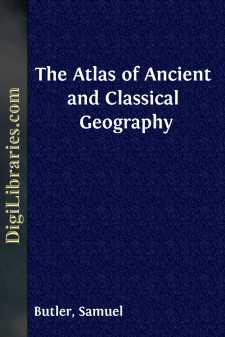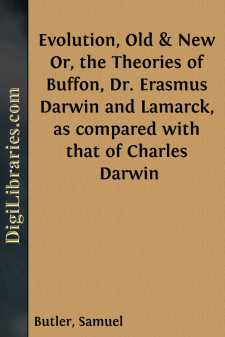Categories
- Antiques & Collectibles 13
- Architecture 36
- Art 48
- Bibles 22
- Biography & Autobiography 813
- Body, Mind & Spirit 142
- Business & Economics 28
- Children's Books 15
- Children's Fiction 12
- Computers 4
- Cooking 94
- Crafts & Hobbies 4
- Drama 346
- Education 46
- Family & Relationships 57
- Fiction 11829
- Games 19
- Gardening 17
- Health & Fitness 34
- History 1377
- House & Home 1
- Humor 147
- Juvenile Fiction 1873
- Juvenile Nonfiction 202
- Language Arts & Disciplines 88
- Law 16
- Literary Collections 686
- Literary Criticism 179
- Mathematics 13
- Medical 41
- Music 40
- Nature 179
- Non-Classifiable 1768
- Performing Arts 7
- Periodicals 1453
- Philosophy 64
- Photography 2
- Poetry 896
- Political Science 203
- Psychology 42
- Reference 154
- Religion 513
- Science 126
- Self-Help 84
- Social Science 81
- Sports & Recreation 34
- Study Aids 3
- Technology & Engineering 59
- Transportation 23
- Travel 463
- True Crime 29
The Atlas of Ancient and Classical Geography
by: Samuel Butler
Categories:
Description:
Excerpt
INTRODUCTION
THE accompanying Atlas has been included in this series for the greater convenience of the reader of “Grote's Greece” and other works that ask a continual reference to maps of ancient and classical geography. The disadvantage of having to turn perpetually from the text of a volume to a map at its end, or a few pages away, is often enough to prevent the effective use of the one in elucidating the other. Despite some slight variations of spelling in the classical place-names used by different authors, there need be no difficulty in adapting the same Atlas to various works, whether they are English versions of historians like Herodotus or Livy, or English histories of the ancient world, such as Grote's and Gibbon's. Taking the case of Grote, he preferred, as we know, the use of the “K” in Greek names to the usual equivalent “C,” and he retained other special forms of certain words. A comparative list of a few typical names which appear both in the index to his “History of Greece” in this series, and in the index to the present Atlas, will show that the variation between the two is regular and, fairly uniform and easy to remember:
GROTE'S spelling CLASSICAL ATLAS GROTE'S SPELLING CLASSICAL ATLAS
Adrumetum Hadrumetum Hydra Hydrea
Ægean Ægæan Iasus Iassus
Akanthus Acanthus Kabala Cabalia
Akarnania Acarnania Nile Nilus
Akesines Acesines Olympieion Olympieum
Aktê Acte Oneium Œneum
Chæroneia Chæronea Paliké Palica
Dekeleia Decelea Pattala Patala
Dyrrachium Dyrrhachium Peiræum Piræum
Eetioneia Eetionea Phyle Phylæ
Egypt Ægyptus Pisa Pisæ
Eresus Eressus Pylus Pylos
Erytheia Erythia Thessaly Thessalia
Helus Helos Thrace Thracia
By comparing in the same way the place-names in Gibbon's and other histories, the reader will need no glossarist in using the Atlas to lighten their geographical allusions. It is not only when he comes to actual wars, campaigns and sieges that he will find a working chart of advantage. When he reads in Grote of the Ionic colonization of Asia Minor, and wishes to relate the later view of its complex process to the much simpler account given by Herodotus, he gains equally by having a map of the region before him.
We realize how Grote himself worked over his topographical notes, eking out his own observations with map, scale and compass, when we read his preliminary survey of Greece, in the second volume of his history. “Greece proper lies between the 36th and 40th parallels of north latitude and between the 21st and 26th degrees of east longitude. Its greatest length, from Mount Olympus to Cape Tænarus, may be stated at 250 English miles; its greatest breadth, from the western coast of Akarnania to Marathon in Attica, at 180 miles; and the distance eastward from Ambrakia across Pindus to the Magnesian mountain Homolê and the mouth of the Peneius is about 120 miles. Altogether its area is somewhat less than that of Portugal.” But as to the exact limits of Greece proper, he points out that these limits seem not to have been very precisely defined even among the Greeks themselves....











